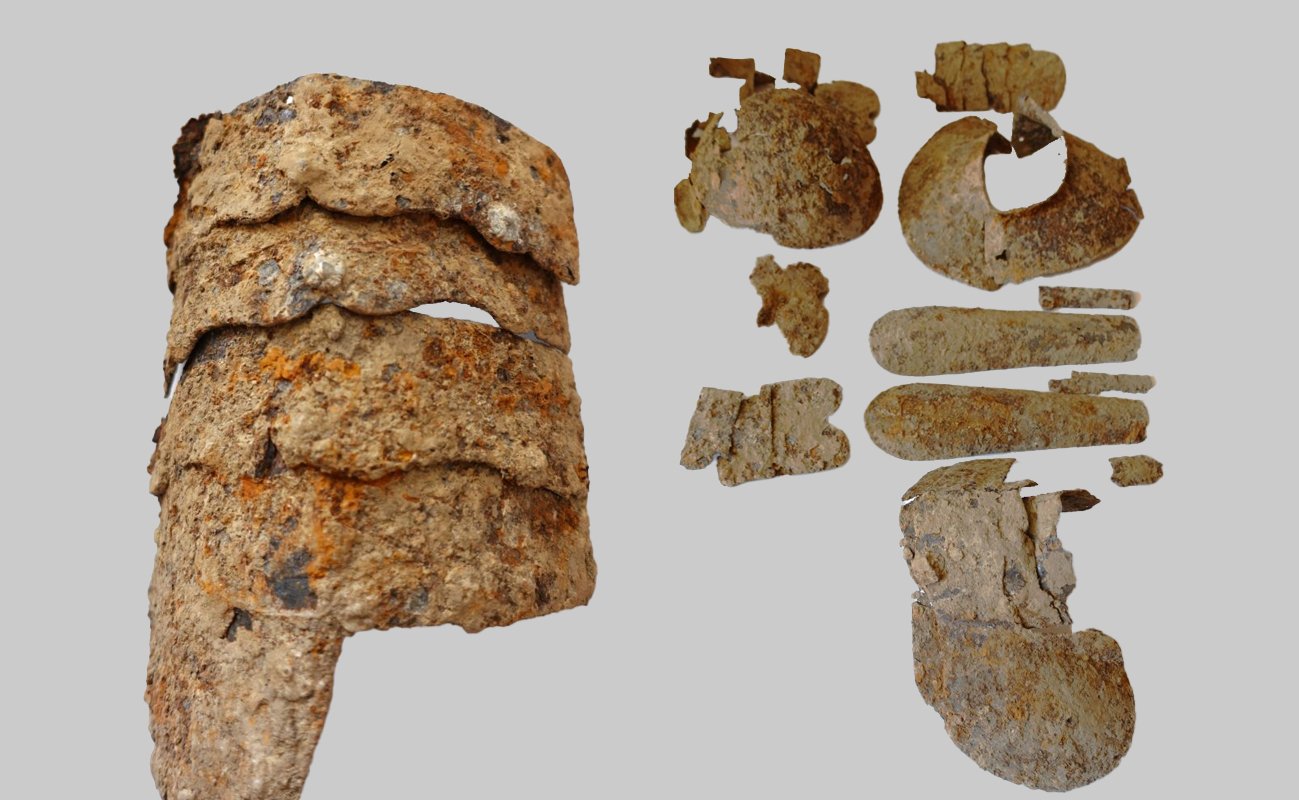A metal detectorist has discovered a partially complete set of Hussar armour in the Polish village of Mikułowice.
Hussars were light cavalry regiments during the late 17th and 18th centuries. Historically, the name originates from medieval Hungary, where light cavalry of the Black Army of Hungary served Matthias Corvinus, the king of Hungary and Croatia from 1458 to 1490.
By the 16th and 17th century, Habsburg emperors hired Hungarian hussars as mercenaries to serve against the Ottomans and on various battlefields throughout Western Europe.
In Poland, the first units of Polish Hussars were formed in 1500 and served at the Orsza (1514), the Obertyn (1531), and the Battle of Vienna (1683). Following the “heavy” Hungarian model, Polish Hussars wore armour and were equipped with a long lance as their main weapon.
The armour from Mikułowice in Poland’s Opatów district was discovered at a depth of 60 cm’s by Patryk Chmielewski. Most of the main components are intact, however, the cuirass lacks the breastplate and backplate.
According to archaeologists from the Sandomierz branch of the Provincial Office for the Protection of Monuments, both bracers protecting the forearm have survived, along with the left shoulder pad, the clavicle protecting the neck and nape, and a semicircular helmet.
Experts from the Maria Curie-Skłodowska University (UMCS) in Lublin suggest that the armour dates from the early 17th century and was likely made locally. However, the lack of decorative elements makes further identification difficult.
After conservation, the armour will go on display at the Castle Museum in Sandomierz.
Using a metal detector in Poland requires a permit granted by the Provincial Conservator of Monuments in accordance with the Act of July 23, 2003 under the protection and care of monuments.
Header Image Credit : Marek Florek
Sources : PAP Foundation – Świętokrzyskie/ Hussar armor from the 17th century discovered in the Opatów district





